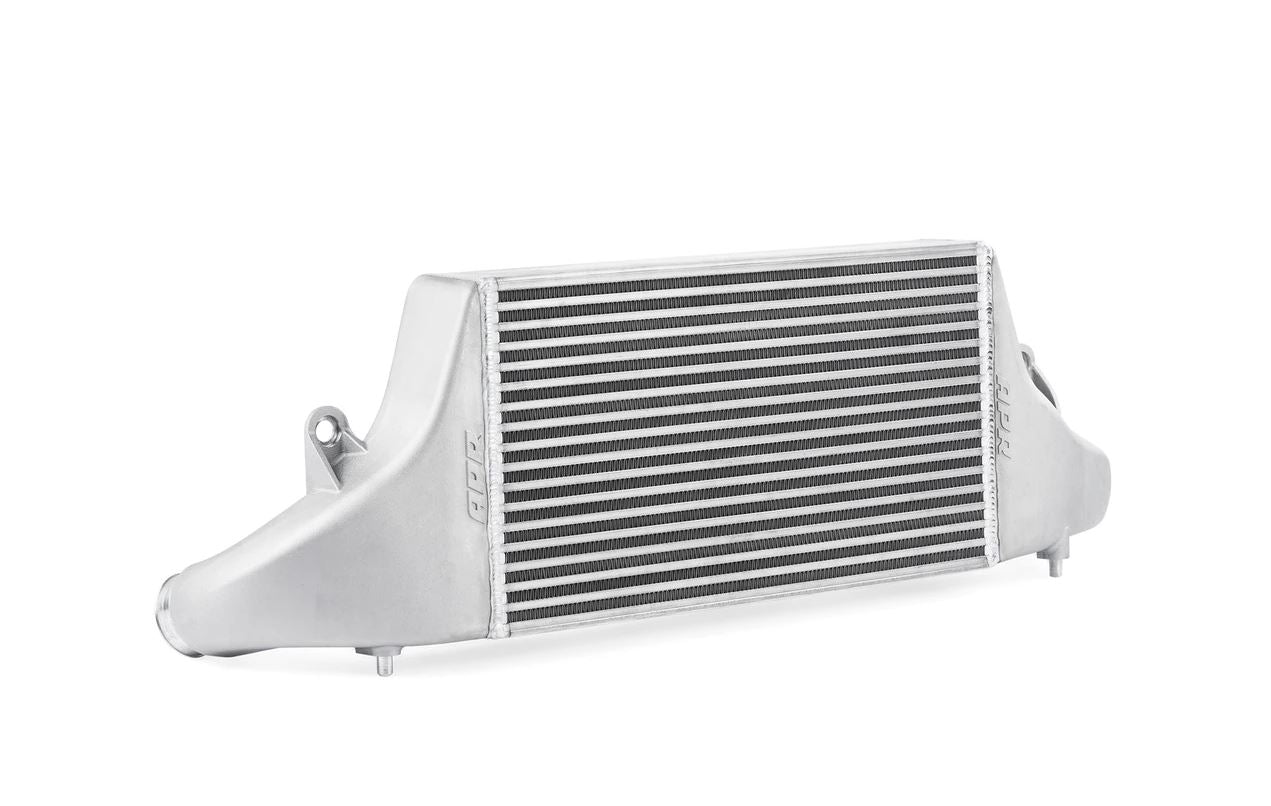Description
Please be aware you will need a US Spec Crash Bar and Foam Filler Piece in order to fit this to a UK Spec Vehicle.
APR’s engineers tested each intercooler in a multitude of tests to show the impact the APR intercooler has on intake air temperature. The following tests were conducted with a 2018 RS3 using our APR Stage 1 ECU Upgrade, 95RON fuel and no other modifications. Ambient conditions during the stock intercooler tests were 78.5°F and 98.06 kPa with 60.47% relative humidity. Conditions were far worse later in the day during during the APR Intercooler testing with 87.2°F and 98.03 KPa with 42.18% relative humidity. This gave the APR Intercooler no added advantage over the stock system during the tests.
First, six back-to-back dyno pulls were conducted with each intercooler. Each run was conducted in 4th gear, from idle to redline, with a cool down between runs. The stock intercooler failed to combat rising IAT’s and quickly exhibited power-robbing heat soak. IAT’s started at 42°C and quickly rose to 58°C by the end of the first dyno pull. This trend continued with the final dyno pull reaching a staggering 70°C! In contrast, the APR Intercooler started at the same temperature and only reached 44°C by the end of the first dyno pull. It was then able to continue rejecting heat, only reaching 54°C by the end of the final dyno pull. The APR Intercooler performed better after 6 back-to-back dyno pulls than the factory intercooler did on it’s very first dyno pull.
Please be aware you will need a US Spec Crash Bar and Foam Filler Piece in order to fit this to a UK Spec Vehicle.
Next we tested a 15-second sprint through the gears. With the factory intercooler, IAT quickly rose from a starting temperature of 37°C to a blistering 64°C! However, as expected, the APR intercooler handled IAT’s extremely well. With a starting temperature of 38°C, IAT dropped to as low as 33°C before slightly climbing above the starting temperature to 40°C by the end of the sprint. A difference of 23°C was exhibited between the two units after only a single 15 second sprint. This directly translates to faster acceleration, and better performance in all conditions.l.
The temperature difference between the stock and APR intercooler directly translates to more horsepower. Comparing best vs best, worst vs worse, and average vs average dynos from both systems, the APR Intercooler laid down 26 AWHP over stock in every scenario. This is easily one of the best dollar-per-horsepower hardware modifications one can make on this platform and highly recommended for anyone at any stage.
Notes:
- Fits Facelift models only
Please be aware you will need a US Spec Crash Bar and Foam Filler Piece in order to fit this to a UK Spec Vehicle.

